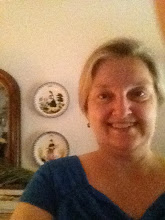 Islands north of Crete sounded like a good place to do it. Plus Craig had been talking about it for 30 years. High on a ridge overlooking a harbor where cruise ships looked like ships and not land masses, we opened our door every morning to whitewashed villages strung along the spine of the C - Shaped island. On the inner side of the ridge, villages with cobble stairs instead of streets spilled down the hillside clinging stubbornly to the rocky cliff underneath. They bubbled with barrel vaulted white washed houses and hotels built one on top of the other. On the other side of the ridge the sloping mountainside fell away into terraced farmland. The land gave way to small black sand beaches before it slipped into the salt water.
Islands north of Crete sounded like a good place to do it. Plus Craig had been talking about it for 30 years. High on a ridge overlooking a harbor where cruise ships looked like ships and not land masses, we opened our door every morning to whitewashed villages strung along the spine of the C - Shaped island. On the inner side of the ridge, villages with cobble stairs instead of streets spilled down the hillside clinging stubbornly to the rocky cliff underneath. They bubbled with barrel vaulted white washed houses and hotels built one on top of the other. On the other side of the ridge the sloping mountainside fell away into terraced farmland. The land gave way to small black sand beaches before it slipped into the salt water.Legend has it that Santorini (or Thira as it is called) was the lost world of Atlantis. After erupting thousands of years ago, the center of the volcano is now 500 meters underwater on the floor of the sea. Lava has bubbled up slowly over millenia forming islands in the harbor. Occassional puffs of steam came out of the ground and rolled down the hillside until they disappeared. One person told me there was a tremor on the island at least once a week.

Thira was a thriving part of the Mycenean world whose
center was on Crete. The Myceneans were the fathers and mothers of the the Greeks to whom Western cultures especially owe so much. This was the world of Homer's Odysseus. It was sort of like putting words to music to read The Odyssey on this island. After having traveled around the Aegean, I recognized the names of Kings and kingdoms as I read them. What was once a world away and unfamiliar became real - so real that the three of us vied for the one copy we purchased. Andrew got first dibs, of course, and he couldn't put it down. I don't know why I was surprised. High drama, a son coming of age, adventure, action, loyalty, treachery and love, it was all there all the time, I just didn't see it.












